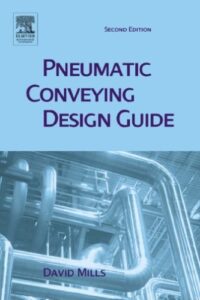Pneumatic Conveying Design Guide Second Edition
Pneumatic Conveying Design Guide Second Edition
The second part of the Pneumatic Conveying Design Guide is devoted entirely to System Design and is an entirely new and updated presentation. In this second edition I have incorporated the main features of the Abbreviated Design Guide in two case studies. These help to reinforce the application of the scaling parameters and design procedures that presented. Particular emphasis is placed on material types and conveying capability, since this is where there have been major advancements in the understanding of the technology. Different grades of exactly the same material can give totally different conveying results and so this aspect of conveying performance is highlighted. Entire chapters devoted to topics such as First Approximation Design Methods and Multiple Use Systems. For feasibility studies, a quick solution is often required so that system economics can be assessed and particularly operating costs.
You can also read Principles of hydraulic systems design 2nd Edition
Pneumatic Conveying Design Guide Second Edition Content
- preface
- Part A: Systems and Components
![Pneumatic Conveying Design Guide Pneumatic Conveying Design Guide]()
- Introduction to pneumatic conveying and the guide
- Review of pneumatic conveying systems
- Pipeline feeding devices – Part I: Low pressure and vacuum
- Pipeline feeding devices – Part II: High pressure
- Pipelines and valves
- Air movers
- Gas–solid separation devices
- System selection considerations
- Part B: System Design
- Air flow rate evaluation
- Air only relationships
- Conveying characteristics
- Conveying capability
- Material property influences
- Pipeline scaling parameters
- Design procedures
- Case studies – Part I: Fine material
- Case studies – Part II: Coarse material
- First approximation design methods
- Multiple use systems
- Part C: System Operation
- Troubleshooting and material flow problems
- Optimizing and up-rating of existing systems
- Operating problems
- Erosive wear
- Particle degradation
- Moisture and condensation
- Health and safety
- Appendix 1: Determination of relevant material properties
- Appendix 2: Additional conveying data
- Index
For this second edition of the Pneumatic Conveying Design Guide I have followed a similar format to the first edition, in that it is in three parts plus appendices. There is often a need for a single system to convey a number of different materials, and possibly to a number of different locations, and these design issues addressed.


Comments are closed.